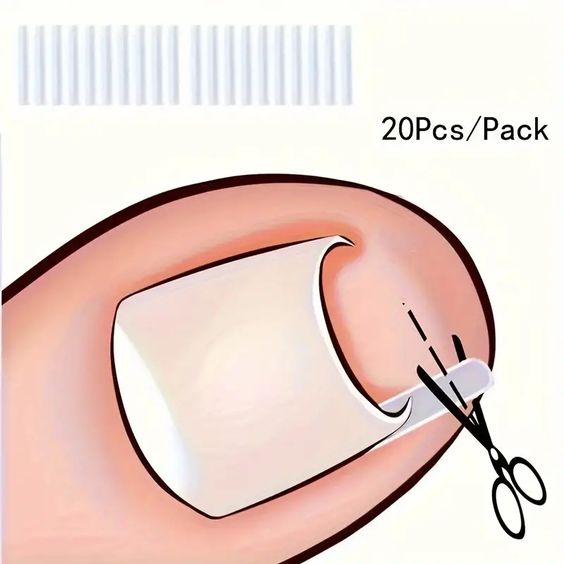Introduction
An ingrown toenail, also known as onychocryptosis, is a common condition that occurs when the corner or side of a toenail grows into the surrounding skin. This can cause pain, redness, swelling, and even infection. Ingrown toenails most often affect the big toe, but other toes can also be affected.
Several factors can contribute to the development of ingrown toenails, including improper nail trimming, tight shoes, genetics, trauma to the toe, and certain medical conditions. Early recognition and treatment of ingrown toenails are important to prevent complications such as infections, abscesses, and the spread of infection to the bone.

This comprehensive guide will discuss the signs and symptoms, causes, diagnosis, treatment options, and preventive measures for ingrown toenails. Understanding this information can help you identify and manage this condition effectively, minimizing discomfort and potential health risks.
Recognizing the Signs and Symptoms
Ingrown toenails typically present a range of symptoms that vary in severity depending on the stage of the condition. Common signs and symptoms include:
- Pain: Pain and tenderness along the edge of the nail, especially when pressure is applied.
- Redness: Visible redness and inflammation of the skin surrounding the ingrown nail.
- Swelling: Swelling of the toe around the affected area.
- Drainage: Discharge of pus or fluid from the affected area, indicating a possible infection.
If you notice any of these symptoms, it is crucial to consult a healthcare professional promptly. Early intervention can prevent the condition from worsening and minimize the risk of complications.
Causes and Contributing Factors
A range of factors can contribute to the development of ingrown toenails. Understanding these causes can help you take preventive measures and reduce your risk:
- Improper Nail Trimming: Cutting your toenails too short or rounding the edges can encourage the nail to grow into the surrounding skin.
- Tight Shoes: Shoes that compress the toes, such as those with narrow toe boxes or high heels, can put pressure on the nails and promote ingrowth.
- Genetics: Some individuals are genetically predisposed to developing ingrown toenails due to the shape and curvature of their nails.
- Trauma: Injury to the toe, such as stubbing or dropping a heavy object on it, can damage the nail and increase the risk of ingrowth.
- Medical Conditions: Certain medical conditions, like fungal infections or diabetes, can affect nail growth and contribute to ingrown toenails.
Diagnosis and Treatment Options
Diagnosing an ingrown toenail typically involves a physical examination by a healthcare professional. They will assess the affected area for signs of inflammation, infection, and nail growth patterns. Treatment options vary depending on the severity of the condition:
- Conservative Treatment: For mild cases, conservative treatments may include warm soaks, proper nail trimming techniques, and over-the-counter pain relievers.
- Medications: Your doctor may prescribe antibiotic ointments or oral antibiotics if there is an infection.
- Minor Surgery: In more severe cases, a minor surgical procedure may be necessary to remove the ingrown portion of the nail. This may involve partial or complete nail removal, depending on the extent of the ingrowth.
Prevention Tips
Preventing ingrown toenails involves adopting healthy foot care practices and being mindful of factors that can contribute to the condition:
- Trim Toenails Correctly: Cut your toenails straight across, leaving them slightly longer than the tip of your toe. Avoid rounding the edges.
- Wear Proper Footwear: Opt for shoes with a wide toe box that allow your toes to move freely. Avoid high heels and shoes that compress the toes.
- Maintain Foot Hygiene: Wash your feet regularly and dry them thoroughly, especially between the toes.
- Protect Your Feet: Wear appropriate footwear when participating in activities that could injure your toes.
Following these preventive measures can significantly reduce your chances of developing ingrown toenails and maintain optimal foot health. Remember to consult a healthcare professional if you notice any signs or symptoms of this condition or have concerns about your foot health.





